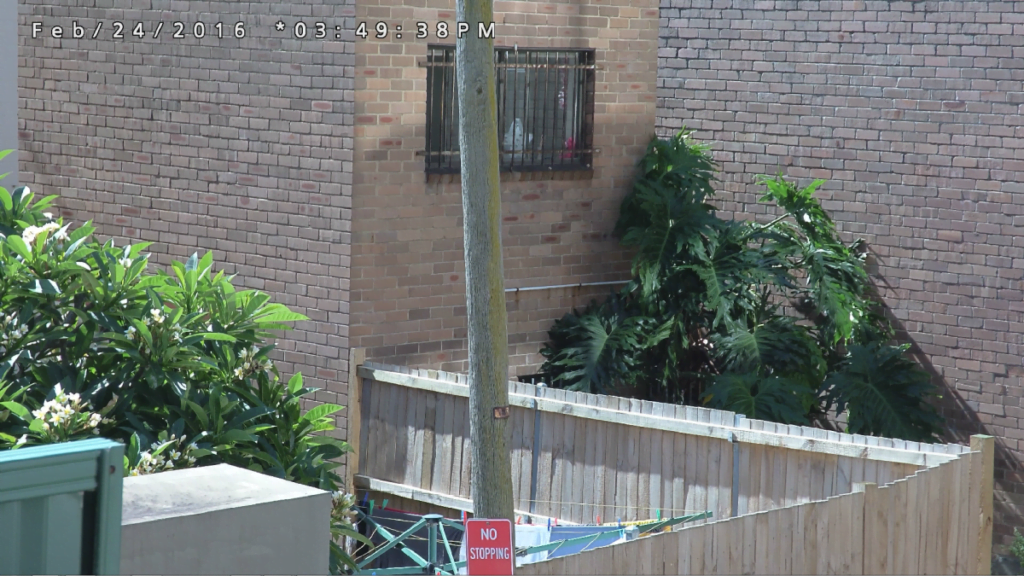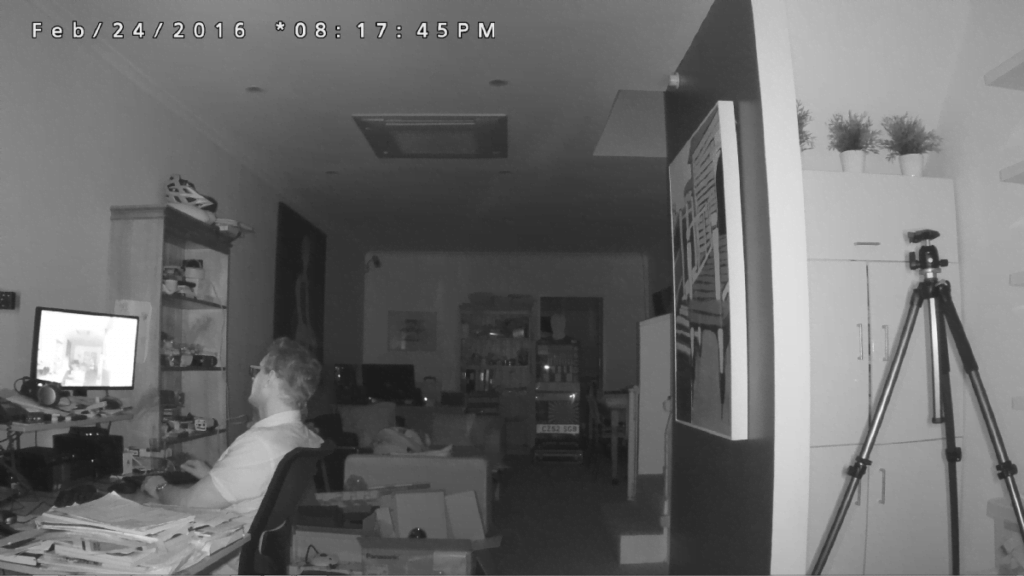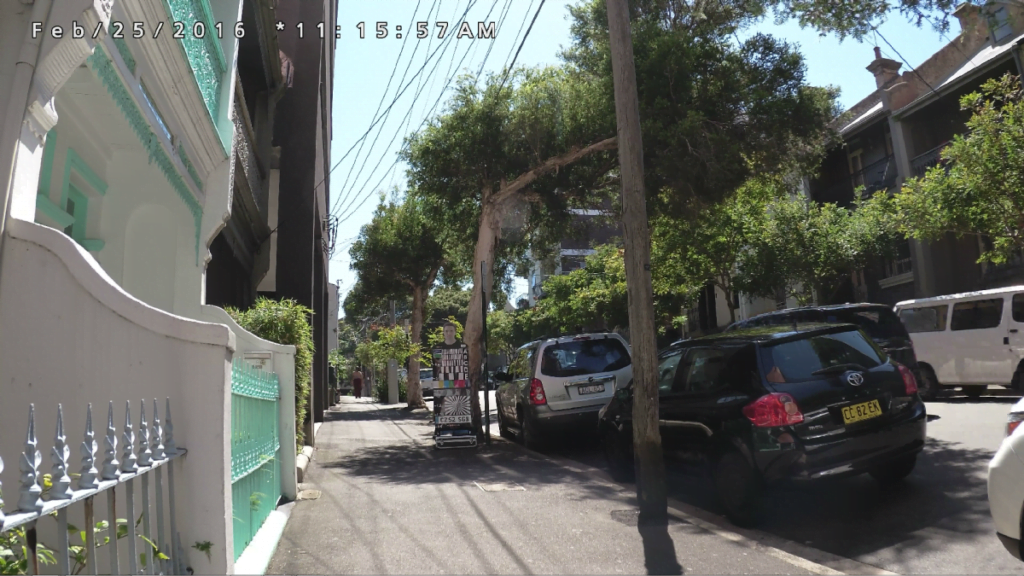Contents
Panasonic’s smoking WV-SPV781L 4K fixed bullet camera offers 4K (3840 x 2160 pixels) at up to 30ips and 4000 x 3000 pixels at 15ips. A rugged and powerful camera, the WV-SPV781L is ideal for serious applications where operators need to dig deep into scenes for extra detail.
Panasonic WV-SPV781L 4K Bullet: Camera Review. This WV-SPV781L Day/Night bullet camera from Panasonic features a new progressive scan 1/1.7-inch MOS image sensor offering 4K resolution at 30ips and a varifocal f1.6 lens with a 4.2mm-25.2mm range. Panasonic’s WV-SPV781L comes fully loaded with 30 metre IR, Rainwash coating, IP66, NEMA 4X and IK10 ratings, 6x optical and 1x, 2x and 4x digital zoom, Smart Depth of Field, 3D Digital Noise Reduction and plenty more. It’s a solution designed not only to survive in challenging environments but to thrive in them.
Not surprisingly, the WV-SPV781L has an epic feature set. The new 3-drive lens system offers an angle of view that 101-degrees at the wide end and 18-degrees at the tele. This ONVIF compliant camera offers multiple H.264 high profile streams, as well as JPEG streams for real time monitoring and recording.
There are clever features like Smart Depth of Field, which optimises DoF, probably by adjusting aperture in the presence of available light, to ensure near and far objects are in focus. There’s also auto back focus, VIQS, which allows you to set up to 8 areas in a scene that will retain high image quality. You can also set up to 4 image capture areas in a scene. High Light Compensation reduces strong light sources such as vehicle headlights to prevent camera being blinded, while Super Chroma Compensation gives better colour reproduction in low light.

Low light performance is quoted as going down to 0.3 lux in colour and 0.04 lux in black and white – both at F1.6. These are typically realistic Panasonic figures that press against don’t defy the laws of physics. The camera also has a Smart IR LED array allowing monochrome performance in 0 lux. IR is adjusted to suit the scene to reduce flare from faces. There’s VMD (video motion detection) with 4 programmable detection areas, 15-step sensitivity level and 10-step detection size, along with a privacy zone that can mask up to 8 private areas.
Alarm sources include a 3-terminal input, and VMD and Panasonic alarm commands can trigger actions such as SDXC/SDHC/SD memory recording, FTP image transfer, E-mail notification, indication on browser, alarm terminal output, and Panasonic alarm protocol output. An SDXC/SDHC/SD Memory card slot allows manual recording (H.264/JPEG), alarm recording (H.264 / JPEG) and backup upon network failure (H.264 / JPEG). Realize long-term recording and auto backup function. There’s also full duplex bi-directional audio that allows interactive communication between camera site and monitoring site and fog compensation function.
The camera body is diecast aluminium with resin lens surrounds, top panel and sunshade. Dimensions are 131mm wide, 130mm high and 380 mm long, and weight is 2.6kg. Protecting the lens is a clear poly resin cover with Rainwash coating. The flying leads emerging from the rear of the mounting place include 3 external I/Os, monitor output, microphone input and audio output. Unit PoE draw is around 13W, while temperature range is between -45 and 50C, and ambient humidity tolerances are 10-90 per cent.
The selection of image setup parameters and recording options is too profound to explain here and is best viewed as a table, in any case. Needless to say, you can maximise the full resolution of this 4K camera on local networks or quality internet connections, or you can optimise your streams for less accommodating infrastructure while recording locally at full frame rate and full resolution.
Driving the camera
As soon as I set up out the back I can see immediately that this camera is a weapon in good light over short and long distances. It’s unsurpassed in our district test – with adequate light it’s just a blinder.
Looking up towards Centrepoint Tower and the World Square at distance of 1000m and close to 2000m, the Panasonic shows its optical class. It shows the same levels of excellence using optical zoom and to a lesser extent, digital zoom during the day in our lane test. Something I notice right away is the cavernous depth of field. I get high levels of detail at full tele from 10m all the way to 1500m and probably beyond, if my field of view was deeper.
This camera has a 12.4MP sensor and when you start hauling the elements in and out it feels just like you’re driving a crop sensor DSLR – how many mouse wheel clicks can I wind into this scene before pixellation creeps in? Is it 4, 5, 6, or maybe 7? This sort of detail is at a whole other level compared to a typical 1080p camera, which will start to go to pieces after 1 or 2 clicks of the mouse wheels. The levels of detail are outstanding.
Lens quality is high. Anyone who’s owned a Panasonic camera knows its engineers do good work and this lens doesn’t break the mould. Sharpness is excellent. There are no chromatic aberrations at all and while there’s barrel distortion at the wide end, it starts to disappear from around 1x optical zoom.
I don’t see any sign of pin cushion distortion at the long end either, and there are plenty of brick walls around me to check this on. High levels of lens sharpness and excellent colour rendition make for excellent acuity. Comparatively, this seems a low contrast lens but I may be reading too much into the hardware. I have the camera settings at default with WDR on and am finding colour saturation to be very natural.
At the widest setting, faced with over 80,000 lux at the lens, and the sun right above the camera sunshade, there’s no veiling flare, though I do see a group of polygon aperture ghosting flares, with a larger circular faint ghost in the bottom of the frame. This is a tough scene, however, and I’ve propped the camera pointing upwards, which is not standard practice. After this image, I lower the camera and swing it towards the lane, putting the sun at a 90-degree angle and bringing the integrated sunshade more completely into play.
I get the feeling early on that our application of lane, street and district, while excellent for 1080p cameras, is less suitable for the long reach of this beast, which would be perfectly at home in large applications like ports, transport hubs, sporting venues and public spaces. Unsurprisingly, driving the zoom through the setup functions of the camera browser is also not as intuitive in real time as it would be if I were sitting at a capable VMS platform but it’s perfectly functional.
Same as every 4K camera, digital zoom within 4K images is great with the WV-SPV781L but it can’t compare to optical zoom, which is what really gives this camera its power. Zoom and focus are relatively quick with this camera – it’s not a PTZ by any means, but thanks to that optical zoom you can delve deeply into scenes to take a closer look at an incident, or reach in to snaffle face recognition or a license plate before rolling back to a wider viewing angle. Using digital zoom on top of electronic zoom is useful, too. It gives you that extra bit of reach with only a small loss of sharpness.
Something I notice immediately is that there’s around one second of latency in my setup with this camera – it’s nothing to do with shutter speed – I get snaps with excellent clarity and motion blur is very low. This is a quality I keep checking wherever I move the camera and eventually I pull the 3 other cameras off the subnet to see if that’s having an impact but no. We have a 20/20 synchronous link at SEN but there’s some delay taking place as a result of driving the camera through the browser.
Low Light Performance
While 4K cameras offer excellent resolution, it’s low light where they can battle so as afternoon draws in I start paying closer attention to the monitor. Overall, performance varies as light levels fall depending on where I locate the camera. In the darker lane it holds colour longer than expected and gives excellent situational awareness. But out front of the office in patchy low pressure sodium streetlight with intermittent car headlights, it switches to night mode and fires up IR, which I didn’t expect after the extended colour performance out the back.
In the lane test, brightness levels drop off relatively early as light levels fall. The image darkens and I increase brightness by a couple of clicks. After this, the image unexpectedly holds and holds and holds from about 500 lux to sub-2 lux at the lens with surprisingly little loss of colour but at the cost of some noise, which I notice from about 740pm onwards.
There’s some blooming and associated veiling flare from the streetlights in this scene but it’s very well controlled. An increase in image swim associated with elevated ISOs is the most noticeable result of falling light levels. Interestingly, I have DNR set to high but I don’t see that digital rebuilt look you often see in cameras struggling with very low light. Personally, I’d prefer to see noise than noise reduction artefacts. In any case, the work in the lane in colour is the best 4K performance we’ve seen.
The camera holds colour under 3-lux and at around 815pm just as I measure 0EV (sub-2 lux) at the lens, we go into night mode and the IR fires up. This camera’s IR array is made up of a ring of small LEDs and offers a good spread of light – enough for widest angles of view the lens is capable of. It’s hard in my external application to get a sense of range thanks to the streetlights and floodlights in my scene.
When I head into the office and switch all the lights off I find IR is strong out to about 8m and then becomes more diffuse to give excellent situational awareness deeper in. It’s a wide spread and provides considerable detail with high levels of contrast to 8m. With no visible light I’m getting Norman from the C-Line but have no face recognition of him. What I do have, however, is face recognition of myself and it’s possible that Panasonic’s SmartIR is adjusting LED output downwards to take into account my presence in the foreground.
Out the front of the office at 8m and with a headlight in the scene I retain excellent colour and full detail of Norman, including face recognition. I am getting a license plate at 10m and another at 16m and could readily guess one as far away as 25m from the lens. Robbing the image of sharpness is noise but again, some ISO noise is a price worth paying for court admissible evidence closer in and deep situational awareness. As I’m moving Norman to 12m, the helpful car headlights drive away and the cameras flicks over into night mode and monochrome.
I have great contrast on the target from the B-Line at 12m. There’s IR flare on the closest number plates, which is normal. Face confirmation is available on digital zoom. As I move out to 16m and then 22m, contrast in monochrome with IR light is excellent – one thing I can clearly see is that IR is reflecting from tail light reflector prisms and license plates at more than 20 metres.
High resolution remains useful in monochrome – the digital zoom lets me reel in details I could never have seen otherwise. Without moving the camera, which is on a cradle rather than a tripod, I wind in the optical zoom and now I get license plates easily at 22m and can use digital zoom to hunt them at 30m, which is excellent work. But when I move Norman to 22m, and return to 1.3x zoom, which I consider to be about 5.5-6mm, he’s in shadow and noise has blurred his face. I can still make out details of his number plate, however.
Down the hill, the camera stays in black and white in 7 lux but there’s more ambient light down here and there’s loads of detail. Usually, I can only make out general details down here when I use digital zoom within a scene. The WV-SPV781L does better than that and when I apply some more optical zoom, the focal point zooms 80m down to the Foveaux St and over 3 lanes to cars and posters on the far side.
This is the strength of the camera – if you need this sort of performance from a fixed bullet, it’s wonderfully capable. People walking in the street towards the lens confirm resistance to motion blur in night mode. Generally, 4K cameras with their smaller pixels use slower shutter speeds and can be vulnerable to motion blur but this Panasonic is performing reasonably well in that regard.
Next morning, I head out into a very bright day – it’s 80,000 lux out the front – and with plenty of light and plenty of backlight, the WV-SPV781L shows its class. No flare, no ghosting, no CAs, easy face recognition, lovely colour rendition and natural skin tones – all these things add depth to a scene and with all those pixels along for the ride, it’s hard not to be pleased with the results.
At 12m, I still have separation from the A line and while it’s no longer perfect face recognition, it’s more than enough for identity confirmation. At 16m, I still have separation of whites and blacks from the A line, as well as identity confirmation. When I move Norman to 22m, I zoom in to about 2.5x zoom and now I have full detail back again as I would have had using optical zoom on the shorter target distances.
Down the hill, performance is excellent. I try full wide, which exchanges some depth of field for a more than 100-degree angle of view. Next, I go back to 5.5-6mm – the depth of field is amazing to see. This focal length is a nice balance on the street with the Panasonic. And when I roll the optical zoom in, it just swallows that 80m walk to the corner without flinching. Optical zoom is a wonderful thing and after you’ve used it with this camera, there’s still 4x digital zoom to tease still more detail from a scene.
Next comes the WDR test and this camera doesn’t disappoint there, either. Forget about chromatic aberration and take a look at the detail in the reflections on shiny surfaces. Colour rendition is particularly good and the transition from dark to light is handled extremely well, too. I have the camera set up on a truss outside the kitchen door and don’t move it as I would a fixed camera on a tripod in this part of the test. Instead I just nudge the zoom in one step at a time. It’s a little darker at the long end – there’s some light fall-off at the tele end, but sharpness and overall image quality are extremely high at all times.
Conclusion
This camera is designed for topical applications – it’s too good for basic duties in small applications. But for larger sites, or for public space, the Panasonic WV-SPV781L has serious benefits. There are some security applications in which compromise is not an option and this camera delivers. It’s wonderful in the day, oblivious to WDR, has low motion blur in snapshots and loses none of its detail to weaknesses of lens design.
Night performance, which is not a strength of 4K cameras at this time, is supported by a larger sensor and what seems to be a high signal to noise ratio. The camera does go into night mode earlier than a 1080p camera will but in the applications that suit it, this is a compromise well worth accepting.
The Panasonic WV-SPV781L can still see much further than a 1080p camera can, even in monochrome. Along with all-round performance, its great strength is the addition of that powerful digital zoom, which lends the camera considerable operational flexibility, as well as ensuring there’s no need for the expense and inconvenience of undertaking refocusing of lens drift.
By John Adams
Features of the Panasonic WV-SPV781L include:
* Progressive scan 1/1.7-inch MOS image sensor
* 4K resolution (3840 x 2160 pixels) at 30ips
* 4.2-25.2mm f1.6 remote varifocal with Rainwash coating
* 6x optical and 4x digital zoom
* 30 metre IR range with Smart Depth of Field
* 3D digital noise reduction
* IP66, IK10, NEMA 4X ratings
* Auto backfocus, VIQS,
* High Light & Super Chroma Compensation.
Find more camera review at SEN NEWS here



































